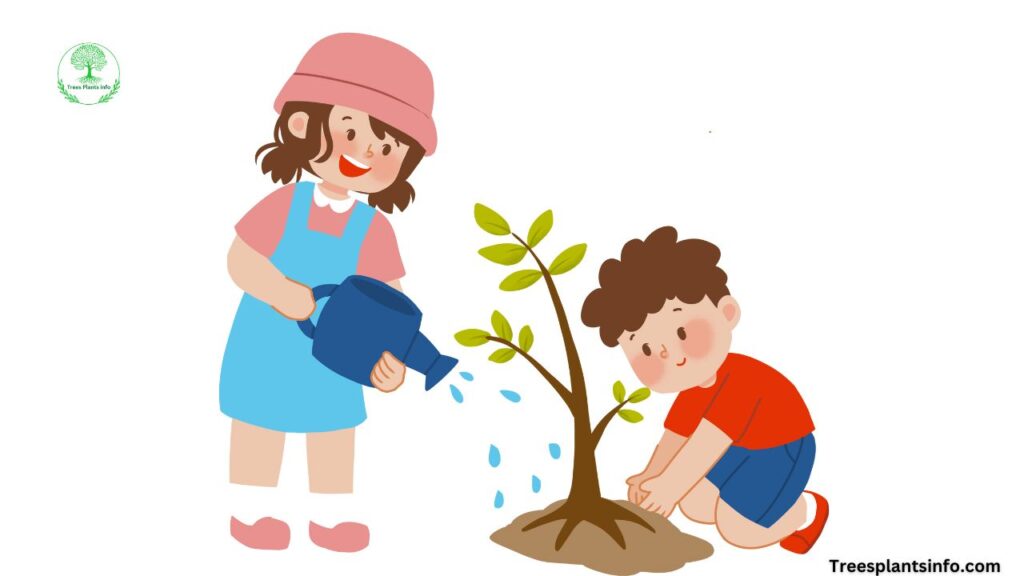A tree is a living creature that provides fruits, air, wood, shade etc.
Characteristics of Trees
- Structure:
- Trunk: The main structural component, supporting the tree and transporting nutrients and water.
- Branches: Extensions of the trunk, supporting leaves and sometimes flowers and fruit.
- Leaves: The primary sites for photosynthesis, where the tree converts sunlight into energy.
- Roots: Underground structures that anchor the tree and absorb water and nutrients from the soil. Trees plants info.
- Growth:
- Trees typically grow from a single stem, although some species can have multiple trunks.
- They can live for many years, with some species capable of living for hundreds or even thousands of years.
- Height:
- Trees are generally taller than shrubs and bushes, often exceeding 20 feet in height, although this can vary widely among species.
- 25 low-maintenance fruit trees planting your garden
Functions and Benefits of Trees
- Ecological:
- Oxygen Production: Through photosynthesis, trees produce oxygen, essential for most life forms.
- Carbon Sequestration: Trees absorb the carbon dioxide released by us or give us oxygen.
- Habitat: Trees provide habitats for numerous species of animals, birds, insects, and other plants.
- Soil Conservation: Tree roots help prevent soil erosion and maintain soil health.
- Economic:
- Timber and Wood Products: Trees are a source of wood for construction, furniture, paper, and other products.
- Fruit and Nuts: Many trees produce edible fruits and nuts that are important food sources for humans and wildlife.
- Social and Cultural:
- Aesthetic Value: Trees enhance the beauty of landscapes and urban environments.
- Recreation: Forests and parks provide spaces for recreational activities like hiking, camping, and bird-watching.
- Cultural Significance: Trees often hold cultural, spiritual, and historical significance in many societies.
Examples of Tree Species
- Deciduous Trees: These trees shed their leaves annually. Examples include oak, maple, and birch.
- Coniferous Trees: Also known as evergreens, these trees retain their needles year-round. Examples include pine, spruce, and fir.
- Tropical Trees: Found in tropical regions, these trees often have broad leaves and can be part of rainforests. Examples include mahogany and teak Trees plants info.
Importance in Urban Areas
- Air Quality Improvement: Trees absorb small dust particles floating in the atmosphere.
- Temperature Regulation: Trees provide shade and can reduce urban heat islands.
- Mental Health Benefits: Green spaces with trees are associated with improved mental well-being.
Trees are vital components of the planet’s ecosystems, contributing to environmental stability, biodiversity, and human well-being.
A tree is a living creature that provides fruits, air, wood, shade etc. to humans throughout its life without asking for anything in return.
Definition of a Tree
A tree is a woody perennial plant, typically characterized by a single main stem or trunk, supporting branches and foliage. Trees can grow to considerable heights and can live for many years, often playing a critical role in their ecosystems by providing oxygen, improving air quality, conserving water, preserving soil, and supporting wildlife Trees plants info.
Key Features of a Tree
- Trunk: The main structural stem, usually woody, that supports the tree and conducts water and nutrients between the roots and leaves.
- Branches: Secondary limbs growing from the trunk, providing support for leaves, flowers, and fruit.
- Leaves: The primary sites of photosynthesis, where sunlight is converted into energy.
- Roots: Underground structures that anchor the tree, absorb water and nutrients, and store energy.
- How to Grow Snake Plant at Home 2024
Types of Trees
- Deciduous Trees: Trees that shed their leaves annually (e.g., oak, maple).
- Evergreen Trees: Trees that retain their foliage year-round (e.g., pine, spruce).
Trees are essential components of many ecosystems, contributing to biodiversity and the health of the environment.

Trees plants info
